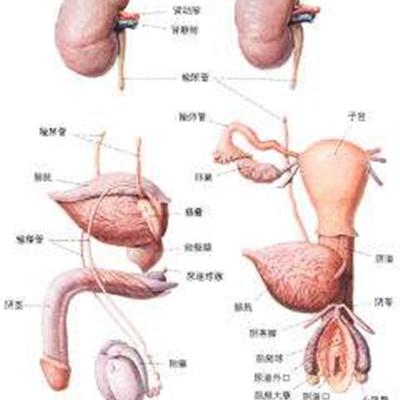Symptoms of intrauterine virus infection?
summary
Various pathogens, including bacteria, viruses, protozoa, mycoplasma and fungi, can infect intrauterine fetus through different ways. There are ascending and transplacental pathways. There are a lot of bacteria in the vagina and cervix of normal pregnant women, including some opportunistic pathogens. When the pregnant woman has urinary tract or genital tract infection, it can infect the fetus upward; Some viruses, such as herpes simplex virus, cytomegalovirus and so on, can also have ascending infection; Once the rupture of fetal membrane, intrauterine infection is more likely to occur. Different pathogens have different ability to cross the placenta. Most viruses can easily cross the placenta, and the virus infected by pregnant women can be transmitted through the placenta and through the blood to the fetus. It is difficult for Treponema pallidum and Listeria to pass through placenta in late pregnancy. The outcome of fetal intrauterine infection is related to the characteristics of pathogens, the degree of infection, time and other factors. It can cause abortion, congenital malformation, growth retardation and neonatal diseases. Symptoms of intrauterine virus infection? Let's talk about it.
Symptoms of intrauterine virus infection?
1、 The occurrence of intrauterine bacterial infection is mainly related to the ascending of bacteria from vagina or cervix after rupture of membrane. The pathogens causing intrauterine infection have changed significantly in recent years. At present, it is considered that intrauterine infection is a mixture of aerobic and anaerobic bacteria, and the pathogens of infection come from vaginal and cervical flora. Clinically, it can be seen that the temperature of pregnant women rises, the heart rate accelerates, the uterus has tenderness, and the cervix has purulent secretion; There were uterine contraction and fetal heart rate acceleration. Laboratory examination showed that the white blood cell count increased, the classification of nuclear left shift, serum C-reactive protein increased and so on. In the case of premature rupture of membranes, especially in the case of rupture of membranes more than 24 hours, the possibility of intrauterine infection should be considered first when the pulse of the parturient quickens. If there is also unexplained fetal heart rate acceleration and fever, the possibility of intrauterine infection is greater. Such as maternal uterus tenderness, increased uterine tension, amniotic fluid odor and purulent, is a serious manifestation of intrauterine infection. No matter in any gestational age, if intrauterine infection is considered clinically, even if amniotic fluid bacterial culture is negative or amniotic fluid smear does not detect bacteria, induction of labor should also be considered. Antibiotics should be given to prevent or control infection 12 hours after rupture of membrane. If premature rupture of membranes occurs in full-term pregnancy, labor should be induced 12 hours after rupture of membranes. Because of the existence of intrauterine infection and the poor response of uterus to oxytocin, the progress of labor is slow and the incidence of fetal distress is high. Therefore, for those who can't deliver vaginally in a short time, cesarean section is often used to end the delivery. If the intrauterine infection is very serious, such as sepsis signs, or can not be controlled by a large number of antibiotic treatment, total hysterectomy should be performed.

2、 Viral infection (1) rubella virus rubella virus is an RNA virus, which can inhibit nuclear division, cause chromosome breakage and distortion, and cause organ development disorder. Rubella virus can cause intrauterine infection through placenta and reproductive tract, and lead to abortion, fetal intrauterine development disorder and congenital rubella syndrome with multiple malformations. The earlier the infection in pregnancy, the higher the rate of fetal deformity and the more serious the degree of deformity. The incidence of infection in early pregnancy, fetal malformation and abortion was 10% - 30%; The infection rate in the second trimester was 25%; In the third trimester of pregnancy, the infection rate was 15%, and the degree of deformity was mild. According to the epidemiological contact history of rubella virus, typical symptoms and signs, and the detection of rubella virus or antibody from the blood and vaginal secretion of pregnant women, the diagnosis can be made. In principle, artificial abortion should be performed for those who have been diagnosed with rubella virus infection by clinical or laboratory examination in early pregnancy; In the second and third trimester of pregnancy, fetal malformation should be ruled out first. If there is no fetal malformation, it can be treated according to routine obstetric treatment. (2) herpes simplex virus herpes simplex virus is a DNA virus. Human herpesvirus with intact envelope can be divided into type I and type II. The former mainly invades oral cavity, nasal cavity and face; The latter mainly invades urogenital mucosa. Infection in early pregnancy can cause intrauterine infection and malformation of fetus through reproductive tract and placenta, such as microphthalmos, retinal hypoplasia and cerebral calcification, and can also cause premature birth and stillbirth. About 40% of the surviving newborns turn to perinatal and severe neurological sequelae. In case of maternal infection, vaginal delivery can cause neonatal herpetic conjunctivitis, keratitis or systemic infection, and jaundice, cyanosis, respiratory distress and circulatory failure. Somnolence, epilepsy and coma were found in central nervous system infection. According to the symptoms and signs of recent infection in pregnant women, as well as the detection of virus and antibody, the diagnosis can be made. Cesarean section should be performed if the mother is confirmed to have genital herpes simplex virus infection and the fetus has no malformation and has not broken the membrane or the membrane is broken within 4 hours. If the diagnosis of fetal malformation, it is appropriate to vaginal delivery.

3、 Other infection (1) syphilis its pathogen is Treponema pallidum. Syphilis infection in pregnant women is harmful to the fetus. Treponema pallidum can pass through the placenta, causing intrauterine infection, abortion, stillbirth or congenital syphilis. The mother to child transmission rate of syphilis is very high. The closer the pregnant woman is infected with syphilis from the time of conception, and without adequate treatment, the greater the chance of fetal infection. Because syphilis is harmful to pregnant women and fetus, early diagnosis and treatment are emphasized. Routine syphilis serological examination during pregnancy. Pay attention to the effect of drugs on the fetus during treatment. (2) Toxoplasma gondii infection is a protozoan parasite. The route of infection is to contact cats, eat raw or unripe meat, contact contaminated soil, etc. Toxoplasmosis is a disease caused by Toxoplasma gondii in mice, which is often asymptomatic or subclinical. Pregnant women suffering from toxoplasmosis can endanger the fetus, leading to abortion, premature delivery, stillbirth and fetal infection. The manifestation of fetal infection is related to the time of infection, the number and toxicity of protozoa passing through the placenta, and the immune status of the mother. The typical manifestations are hydrocephalus or microcephalus, chorioretinitis, convulsion, and multiple organ damage. Asymptomatic infection can cause intrauterine growth retardation and premature birth. Infection in late pregnancy usually does not cause fetal infection.

matters needing attention
Because the disease is mostly subclinical or asymptomatic, there are often no specific symptoms, so the clinical diagnosis is difficult. There is no need to terminate pregnancy in patients with acute infection before pregnancy. Early pregnancy infection should be determined according to the condition.











